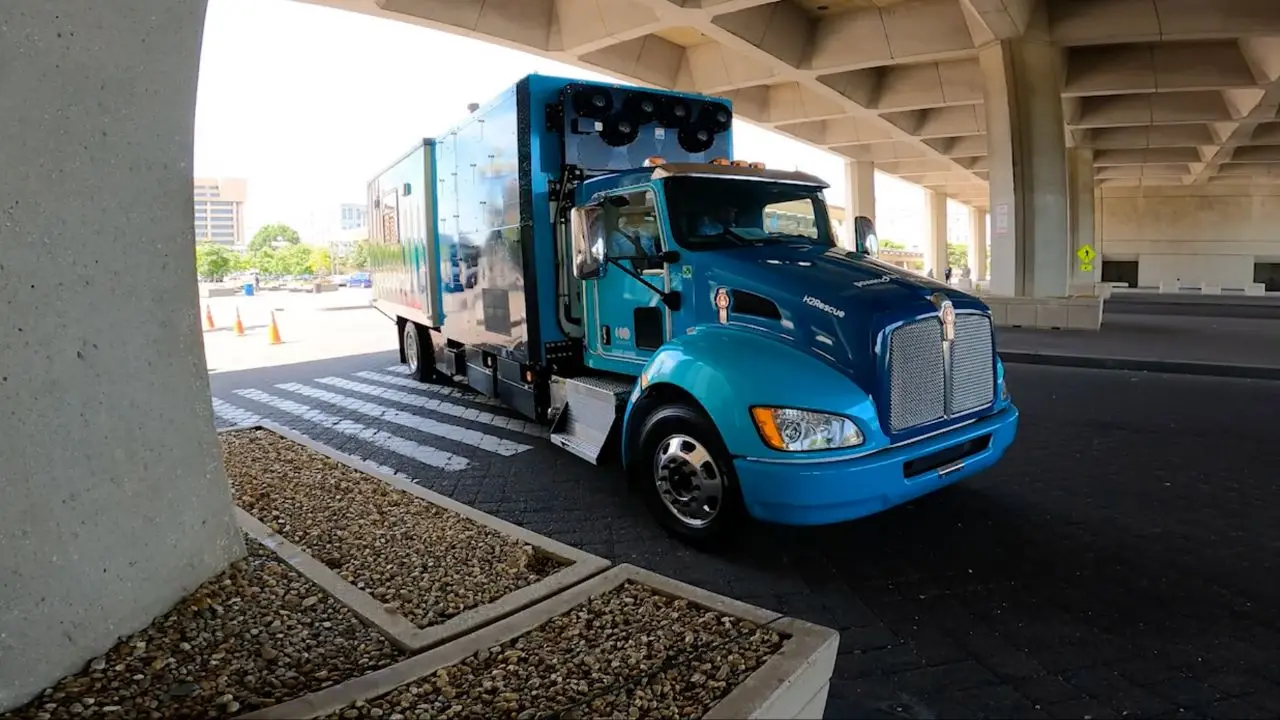Hydrogen-Powered Rescue Truck Sets New World Record: A Technological Marvel
In a stunning display of engineering and innovation, a hydrogen-powered rescue truck has set a new world record, revolutionizing the landscape of emergency response vehicles. This remarkable achievement not only highlights the prowess of clean energy technology but also emphasizes the vital role such innovations can play in public safety. The implications of this breakthrough extend far beyond mere statistics; it signifies a commitment to sustainability while enhancing operational efficiency in critical situations.
The Record-Breaking Performance
The hydrogen-powered rescue truck recently achieved a record for the fastest response time in emergency situations, clocking in at an impressive average of just 3.5 minutes from the moment an emergency call is received to the truck’s arrival on the scene. This remarkable feat was made possible through the integration of cutting-edge hydrogen fuel cell technology, which allows the vehicle to operate at high efficiency with minimal environmental impact.
According to industry experts, the truck’s performance is a testament to the advancements in hydrogen fuel cells that have occurred over the past decade. Unlike traditional diesel-powered trucks, which emit harmful pollutants, the hydrogen-powered model operates by converting hydrogen and oxygen into electricity, with water as the only byproduct. This makes it not only a high-performance vehicle but also an eco-friendly option for rescue operations.
Technical Specifications and Innovations
The hydrogen-powered rescue truck is equipped with several innovative features that enhance its performance and usability:
- Hydrogen Fuel Cells: The heart of the vehicle’s powertrain, allowing for rapid refueling and extended range.
- Advanced Navigation Systems: Integrated GPS and AI-driven systems ensure the fastest routes to emergencies.
- Real-Time Communication Tools: Ensures seamless communication between the rescue team and emergency dispatchers.
- All-Terrain Capabilities: Designed to operate effectively in various environments, from urban areas to rugged terrains.
- Modular Setup: The truck can be customized for different types of emergencies, whether medical, fire, or disaster response.
The combination of these features not only enhances the truck’s operational capabilities but also provides the flexibility needed to address a wide range of emergencies efficiently.
Environmental Impact and Sustainability
One of the most compelling aspects of the hydrogen-powered rescue truck is its commitment to sustainability. As cities around the world grapple with air quality issues and climate change, the introduction of hydrogen fuel technology into emergency services presents a viable solution. The vehicle’s operation produces zero greenhouse gas emissions, a stark contrast to the diesel trucks that still dominate the sector.
This focus on sustainability is becoming increasingly crucial as communities seek to reduce their carbon footprints. The adoption of hydrogen-powered vehicles can significantly contribute to this goal, particularly in urban areas where pollution is a pressing concern. Furthermore, as technology advances, the infrastructure for hydrogen production and distribution is also evolving, making it more accessible for widespread use.
The Future of Emergency Response Vehicles
The success of the hydrogen-powered rescue truck may pave the way for similar innovations across various sectors. Emergency response vehicles are just the tip of the iceberg; the potential applications for hydrogen technology are vast. From public transportation to freight shipping, the shift toward hydrogen fuel could transform multiple industries, promoting a cleaner and more sustainable future.
Experts predict that as more municipalities adopt hydrogen technology, the cost associated with producing hydrogen fuel will decrease, making it an economically viable option for many sectors. This could lead to an increase in demand for hydrogen-powered vehicles, further driving innovation and investment in this area.
Community Response and Public Safety Benefits
The introduction of a hydrogen-powered rescue truck has not only sparked interest within the engineering and environmental sectors but has also garnered enthusiastic support from local communities. Citizens are increasingly aware of the importance of sustainable practices in public services, and the adoption of such technologies in emergency response serves as a model for other sectors.
Public safety officials have lauded the truck’s performance, emphasizing the enhanced response times that can significantly impact outcomes in life-threatening situations. Faster response can mean the difference between life and death, and with the ability to reach emergencies quickly and efficiently, this vehicle is poised to save lives.
Challenges and Considerations
While the hydrogen-powered rescue truck represents a significant leap forward, there are still challenges that need to be addressed. Some of these include:
- Infrastructure Development: Expanding hydrogen refueling stations is crucial for the widespread adoption of hydrogen vehicles.
- Cost of Technology: Initial investments in hydrogen technology can be high, though long-term savings may offset these costs.
- Public Awareness: Educating the community about the benefits and safety of hydrogen technology is essential for acceptance.
Addressing these challenges will require collaboration between governments, private sectors, and communities to ensure that the benefits of hydrogen technology are realized fully.
Conclusion: A Bright Future Ahead
The achievement of the hydrogen-powered rescue truck setting a new world record is more than just a technological marvel; it represents a paradigm shift in how we approach emergency services and sustainability. With its impressive performance, commitment to environmental stewardship, and potential to transform public safety, the vehicle stands as a beacon of innovation.
As societies continue to face the dual challenges of urbanization and climate change, the adoption of hydrogen-powered vehicles will likely play a crucial role in shaping the future of public service. This groundbreaking innovation not only inspires hope for a cleaner planet but also demonstrates the power of human ingenuity in overcoming challenges and improving lives.
In the coming years, as more hydrogen-powered vehicles hit the streets, we may very well witness a new era in emergency response, where speed, efficiency, and sustainability are seamlessly integrated. The journey has just begun, but the potential is limitless.
See more Future Tech Daily

